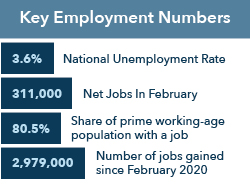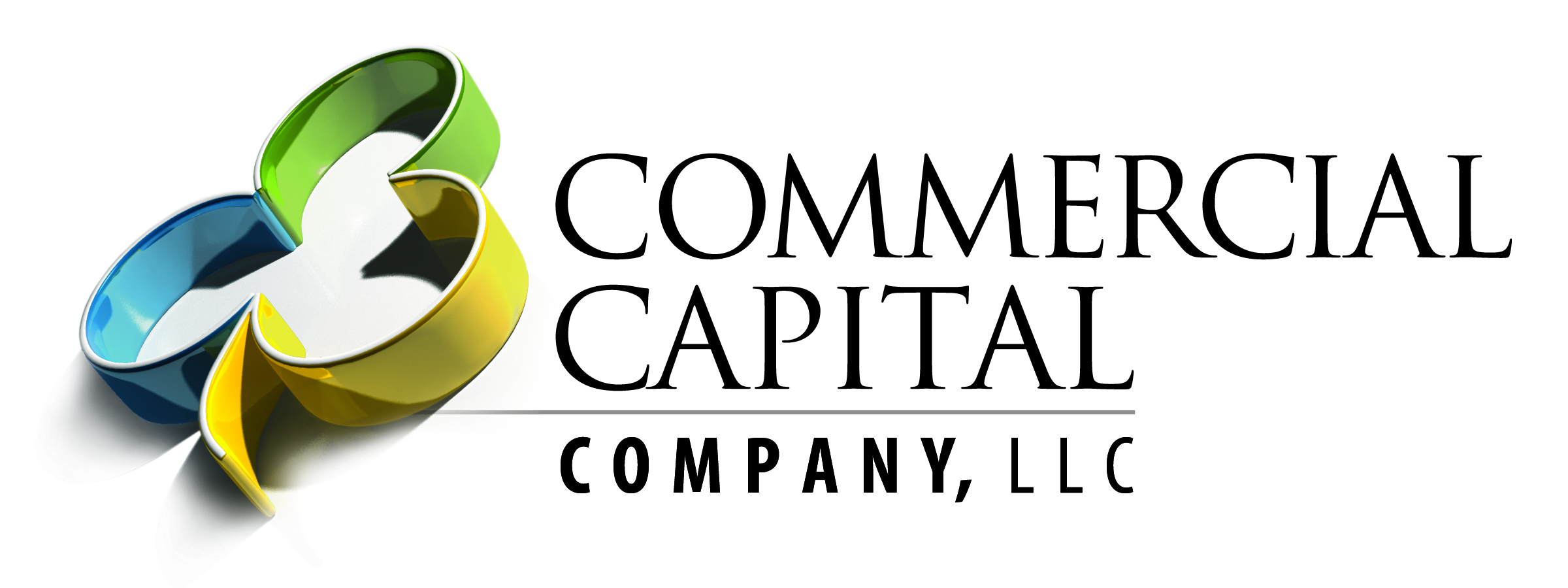Q1 2023 Review: It’s Been A Wild Quarter – What’s Next?
It’s Enough To Make Your Head Spin
As we carry on into Q2, concerns about continuously rising interest rates and a looming recession have made small business owners apprehensive about their future prospects. When it comes to navigating the current economic climate, there’s been a lot to unpack lately with the numerous bank closures, Fed rate hikes and of course the job numbers. How are these factors impacting business growth and equipment acquisition?
The recovery of the U.S. economy has frequently defied predictions of an assumed pending recession. It’s been able to withstand supply-chain backlogs, labor shortages, global conflicts, and the fastest increase in interest rates in decades. Forecasters project the current conditions will take a toll on hiring and investments as banks pull back on lending. Businesses will struggle to borrow money as a result. Some forecasters say the turbulence had already made a recession more likely.
“The U.S. economy is at a crossroads,” says Richard Branch, chief economist at Dodge Construction Network. “The labor market is holding strong, buoying consumer spending. However, core inflation has not slowed enough, despite numerous interest rate increases from the Federal Reserve. Every additional rate increase raises the odds of a recession.”
An Old Fashion Bank Run?
Or was it the first social media bank run? With today’s technology, panic was spread immediately. No need to physically run to the bank when transferring assets can be done on your phone remotely. We’ve yet to see how the banking industry will ultimately handle this kind of risk posed by social media and the convenience of their own banking apps.
0n March 10, 2023, Silicon Valley Bank (SVB) — the 16th largest bank in the United States — was shut down by the California Department of Financial Protection and Innovation. The bank was shuttered after the value of its investments depreciated and its depositors both large and small withdrew copious amounts of money — total attempted withdrawals of $42 billion. Fear of contagion and the impact the bank’s collapse could have on the economy as a whole, Federal regulators rushed to fully insure and protect all of Silicon Valley Bank’s depositors and their balances.
On March 26, First Citizens Bank bought up all deposits and loans of the failed bank except for $90 billion of securities and other assets that remained in FDIC receivership.
 The rise in interest rates is the direct cause of uncertainty in the banking sector. Bonds and treasury values fall when interest rates increase, but SVB had invested a large amount of bank deposits in long-term U.S. treasuries and agency mortgage-backed securities. There was a distinct lack of diversification that placed the bank in peril when the Federal Reserve hiked interest rates throughout 2022/23 to combat inflation. Their bond portfolio dropped in value. The bank didn’t have enough cash on hand to liquidate deposits because they were tied up in long-term investments. SVB would have recovered its capital if they held those bonds until their maturity date, but time wasn’t on their side. When word got out via social media that they were selling their bonds at a significant loss and their stock crashed, jittery customers and investors made a run.
The rise in interest rates is the direct cause of uncertainty in the banking sector. Bonds and treasury values fall when interest rates increase, but SVB had invested a large amount of bank deposits in long-term U.S. treasuries and agency mortgage-backed securities. There was a distinct lack of diversification that placed the bank in peril when the Federal Reserve hiked interest rates throughout 2022/23 to combat inflation. Their bond portfolio dropped in value. The bank didn’t have enough cash on hand to liquidate deposits because they were tied up in long-term investments. SVB would have recovered its capital if they held those bonds until their maturity date, but time wasn’t on their side. When word got out via social media that they were selling their bonds at a significant loss and their stock crashed, jittery customers and investors made a run.
The FDIC estimated that the SVB failure cost nearly $20 billion.
But Wait, There’s More!
SVB wasn’t an isolated case as Signature Bank and Credit Suisse faced solvency issues, as well.
According to the FDIC, New York Community Bank agreed to buy a substantial portion of Signature Bank in a $2.7 billion deal on March 19.
 Credit Suisse is known as a “global systemically important bank”. It’s surmised if Credit Suisse failed, it could have ripple effects throughout the global economy. In a Swiss government-brokered deal, on March 19, UBS, a multinational investment bank and financial services company founded and based in Switzerland, agreed to buy out the rival Credit Suisse for $3 billion Swiss francs ($3.25 billion) that saved Credit Suisse from going bust. UBS will also get an extra $100 billion from the Swiss central bank as part of the deal.
Credit Suisse is known as a “global systemically important bank”. It’s surmised if Credit Suisse failed, it could have ripple effects throughout the global economy. In a Swiss government-brokered deal, on March 19, UBS, a multinational investment bank and financial services company founded and based in Switzerland, agreed to buy out the rival Credit Suisse for $3 billion Swiss francs ($3.25 billion) that saved Credit Suisse from going bust. UBS will also get an extra $100 billion from the Swiss central bank as part of the deal.
The U.S. government has taken steps to restore confidence in the U.S. banking system. The Treasury Secretary and National Economic Council Director worked with the banking regulators to address problems at SVB and Signature Bank. Rescue money will come from a fund that banks already pay into — the Deposit Insurance Fund to ensure taxpayers aren’t footing the bill. Depositors will have access to all their money, while shareholders and certain unsecured debt holders will not be protected. Also, the Federal Reserve Board will make funding available to eligible depository institutions to help ensure banks can meet the needs of all their depositors. [Treasury Statement]
Uncertainty continues to plague various industries, but since the depositors have been guaranteed, this may be viewed as another inconvenience rather than an apocalyptic event.
The Effect Of Bank Closures On Equipment Finance
According to economists, perceived instability of America’s banks is fueling uncertainty, causing concerns of a spillover to the activities of various industries: construction, manufacturing, tech, and others. After the closures of SVB and Signature Bank in March, questions surfaced about how those collapses could negatively impact future borrowing.
Business owners can expect tension from small and regional banks that will tighten their credit lines and make it more difficult to close traditional loans. It will be increasingly important for companies to build cash reserves and maintain levels of liquidity. Preserving diversity in investments enables companies to react quickly to changes in the market.
“Overall, the U.S. banking system is healthy, but smaller regional banks could face difficulty, and many have begun to tighten lending standards,” says Branch. “These smaller banks are the lifeblood of the construction sector—providing credit not just to contractors, but also loans to developers for many types of projects.” He adds: “Should credit continue to tighten, it could put many small players in the construction sector in difficult situations and potentially lead to a sharper pullback in construction starts.”
The recent bank collapses and the ensuing destabilizing impact in the banking system raises serious doubts about how to shape the regulatory and oversight policies going forward for long-term stability in the banking system. While an emergency response was supported by both parties in Congress, it concerning that legislators may not have a complete understanding of the reasons for the collapse or the will to develop an effective regulatory process to ensure the system’s long-term health.
Future Fed Rate Hikes Dependent Upon Inflation, Bank Stability And Unemployment
Inflation hasn’t been slowing as quickly as officials expected. The challenge for the Federal Reserve is to curb inflation without tanking the economy. Some forecasters speculate most of the Federal Reserve’s interest rate hikes may be in the rearview mirror. How many more increases will the Feds implement before the economy breaks?
In February, prior to recent bank collapses that raised stability concerns, the Feds were signaling a more aggressive 1/2-point raise. On March 22, the federal funds rate was raised by only a 1/4 of a percentage point to a range of 4.75 to 5.00 percent and the bank made no change to its program of reducing holdings of Treasury securities, and agency mortgage-backed securities on its balance sheet. The Feds stated that the recent banking crisis may result in tighter credit conditions that will weigh on economic activity, hiring, and inflation. Rates haven’t been at this level since the mid-2000s.
Only one of the ten Fed officials project the Fed won’t hike rates again this year, while the majority expect one to three or more rate increases likely. View recent economic projections from bankrate.com.
It’s speculated tightening credit and less lending could help the Fed by cooling demand and easing inflation.
“If the financial system remains stable, this likely isn’t the last rate hike. But if another shoe drops and conditions deteriorate, the question becomes how soon the Fed will reverse course and begin cutting rates – aggressively,” states Greg McBride, CFA, at Bankrate.
Borrowing costs are unlikely to fall until the Fed cuts rates.
Employment Grew By 311,000 Jobs In February
The job market is beginning to find its balance as consumer demand declines and the cost of borrowing increases. However, all signs still show the U.S. labor market is strong.
 The unemployment rate edged up to 3.6%, above the projected 3.4% target. Despite the Fed’s efforts to slow the economy, the notable job gains which occurred in leisure and hospitality, retail trade, government, and health care show solid growth. Labor force participation grew as the economy continues to recover. In the last six months, there’s been an average monthly employment growth of 343,000. Even though the number of jobs was stronger than projected, February’s growth represented a deceleration from an unusually potent January.
The unemployment rate edged up to 3.6%, above the projected 3.4% target. Despite the Fed’s efforts to slow the economy, the notable job gains which occurred in leisure and hospitality, retail trade, government, and health care show solid growth. Labor force participation grew as the economy continues to recover. In the last six months, there’s been an average monthly employment growth of 343,000. Even though the number of jobs was stronger than projected, February’s growth represented a deceleration from an unusually potent January.
The number of unemployed persons edged up in February to 5.9 million. Workers unemployed 6 months or more declined to 17.6 % of all unemployed. For the first time in two years, the Labor Department reported that job openings fell below 10 million at the end of February. However, there were 1.7 job openings for every unemployed person last month, which makes it easier for laid-off workers to quickly find employment.
 U.S. employers announced 89,703 job cuts in March, up 15% from February. Layoffs this year have been blamed on many factors, including market or economic conditions, cost-cutting, store or department closures and financial loss.
U.S. employers announced 89,703 job cuts in March, up 15% from February. Layoffs this year have been blamed on many factors, including market or economic conditions, cost-cutting, store or department closures and financial loss.
The number of Americans filing new claims for unemployment benefits fell last month suggesting the labor market is slowing. The labor market is presumed to further loosen up in the 2nd quarter as companies respond to slowing demand brought on by the Fed’s interest rate increases.
While large businesses are inclined to shed workers in this environment, small business owners struggle to take advantage of current sales opportunities. In fact, labor quality continues to hold back small business hiring.
If the Fed is determined to restore the pre-covid 2% inflation, the best-case scenario is what we’re currently seeing — wage growth slowing but inflation slowing even faster.
Biggest Challenges Faced By Small Business Owners
It’s no surprise that inflation takes the top spot followed by revenue, access to capital and quality labor. The size of your business doesn’t matter or where it’s located on the map, inflation is the leading concern for owners today.
As costs of supplies and labor rise, business owners struggle to generate revenue. In the fourth quarter of 2022, 7 in 10 small business owners said they raised prices to cope with rising inflation. The Fed’s fight with inflation and its perennial interest rates hikes have made borrowing more expensive.
For small business owners who rely on credit and loans to finance their business equipment, rising interest rates are a pressing concern. The rising cost of capital increases the cost of doing business. Concern about access to financing has risen since this time last year. The size of a company has an impact on how easy it is to find affordable financing.
Business Development Activities
 Interest rates often take a while to filter through the economy, but over the next 2 years the U.S. economy is expected to grow modestly. The required amount of “skin in the game” is entirely up to you. The importance of managing your business development activities and forecasting new opportunities determines your growth strategy and equipment requirements. Business owners and industry leaders always seek to mitigate risk when acquiring new or used equipment. Transforming current economic disruption into future profitability is not a calculation for the meek. However, given the current climate, it’s a safe assumption that the Feds aren’t done raising rates. So, when is the “right” moment to pull the trigger and fix your rate? How much work is in your funnel?
Interest rates often take a while to filter through the economy, but over the next 2 years the U.S. economy is expected to grow modestly. The required amount of “skin in the game” is entirely up to you. The importance of managing your business development activities and forecasting new opportunities determines your growth strategy and equipment requirements. Business owners and industry leaders always seek to mitigate risk when acquiring new or used equipment. Transforming current economic disruption into future profitability is not a calculation for the meek. However, given the current climate, it’s a safe assumption that the Feds aren’t done raising rates. So, when is the “right” moment to pull the trigger and fix your rate? How much work is in your funnel?
Focus On Mutual Success
Finding the right financial partner to navigate these uncertain times is paramount. Profitable relationships are about asking the right questions, providing stellar customer service, and delivering quality financial products. Productive relationships are built to last regardless of economic conditions. We listen and design equipment financing solutions that help you accomplish your business goals.
It’s simple for our competitors to say yes to an easy deal, but what about those challenging deals? We have the resources and creativity to offer customized options that help you become more profitable. No cookie cutter deals. No add-on or hidden fees. We develop terms that meet our customers’ needs, not just forcing them into the standard 24, 36, 48 and 60.
We’re up to the challenge, give us a chance to prove it.
We’re a Veteran Owned Business.
We proudly support our nation’s veterans. Find us on Veteran Quote.
Contact Us
13910 W 96th Terrace
Lenexa, KS 66215
Toll Free: (800) 878-8053
Direct: (913) 341-0053
E-mail: sales@ccckc.com



